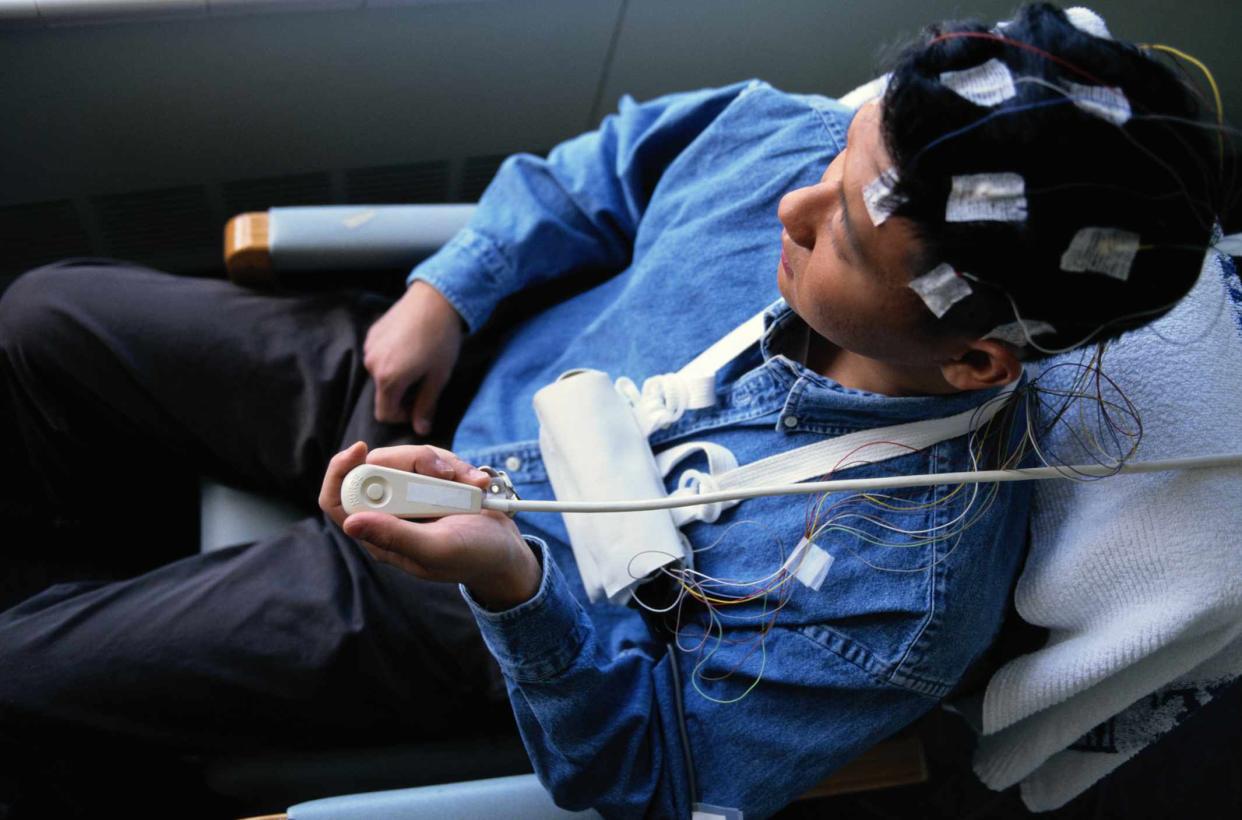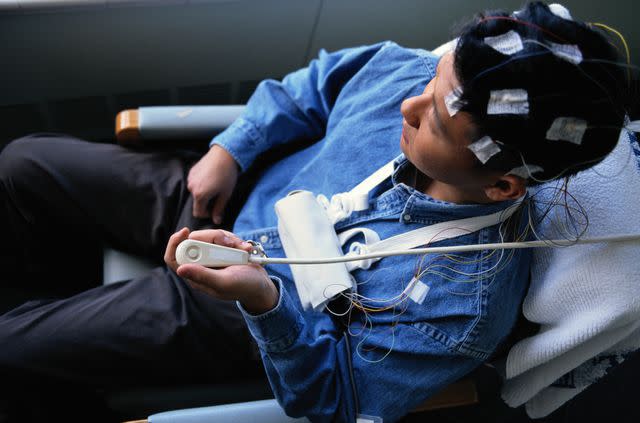Long-Term Epilepsy Prognosis

Keith Brofsky / Getty images
Medically reviewed by Smita Patel, MD
The prognosis for people with epilepsy can vary widely depending on factors such as type of seizures, age of onset, and response to treatment. A prognosis describes how an illness or condition is likely to develop over time and/or with treatment. It can also be a prediction about how it will affect a person's life.
Epilepsy is a neurological condition characterized by recurrent seizures (temporary interruptions in electrical brain functions). Epilepsy can occur at any age, affecting around 50 million people globally.
Generally speaking, up to 70% of people who are receiving proper treatment can live seizure-free. Some people who experience seizures related to epilepsy experience no long-term adverse effects, while others can have lasting effects.
This article will discuss what influences the prognosis for people with epilepsy, its possible complications, and what treatments are available.

Keith Brofsky / Getty images
Factors That Impact Prognosis
A number of factors influence the prognosis for epilepsy, including:
The type of seizures
The type of epilepsy or epilepsy syndrome
The age of the person when seizures start
Whether the person has neurological problems or other conditions along with epilepsy
How well the seizures are controlled with medications
What neuroimaging studies—such as a computed tomography (CT) scan or magnetic resonance imaging (MRI)—show, if these tests were run
Cause of the seizures, such as genetic, symptomatic (the result of trauma to the brain, such as injury, infection, or stroke), or cryptogenic (unknown cause)
Frequency of seizures
Access to treatment and prevention measures
Rates of epilepsy are higher in low- to middle-income countries than in high-income countries. Almost 80% of people with epilepsy live in low- and middle-income countries.
This higher rate is thought to be due to factors such as increased risk of endemic conditions (like malaria), higher risk of injury (such as from traffic accidents), more birth-related injuries, and reduced access to medical care. Approximately 75% of people living with epilepsy in low-income countries do not receive adequate treatment for their needs.
Prognosis for Epilepsy
About 70% of people newly diagnosed with epilepsy can expect to experience prolonged periods of time being seizure-free, typically as a result of medication. Approximately 50% to 75% of people whose seizures have been controlled with medication can eventually be weaned off of it. In both adults and children, remission rates tend to increase the longer the follow-up period.
A 2021 study of untreated epilepsy, primarily based in developing countries, found that approximately 30% to 40% obtain between five- and 10-year remission without treatment.
Some researchers have proposed that epilepsy prognosis be classified into four groups, as follows:
Excellent prognosis (about 20% to 30% of the total): High probability of spontaneous remission; includes benign focal epilepsies, benign myoclonic epilepsy in infancy, and reflex epilepsies (epilepsies in which seizures are brought on by certain "triggers")
Good prognosis (about 30% to 40% of the total): Controlled easily with medication and the possibility of spontaneous remission; includes childhood absence epilepsy and some focal epilepsies
Uncertain prognosis (about 10% to 20% of the total): May respond to medication, but with a tendency to relapse after stopping treatment; includes juvenile myoclonic epilepsy and most focal epilepsies (symptomatic or cryptogenic)
Poor prognosis (about 20% of the total): Seizures are resistant to even intensive treatment; includes epilepsies associated with congenital (present at birth) neurological conditions, progressive neurological disorders, and some symptomatic or cryptogenic partial epilepsies
Epilepsy is usually treated with medication.
In some cases, particularly if medication is not effective, other treatments may be needed, including:
Surgery to remove the affected areas of the brain
Diet therapy under the advisement of a healthcare provider, such as the ketogenic diet or the modified Atkins diet
Implanted devices, such as a vagus nerve stimulator or a deep brain or responsive nerve stimulator
Childhood Onset
Seizure frequency is just one way prognosis for children with epilepsy is measured. Other factors to consider include:
How they are managing at school
The likelihood of their having social or behavioral problems
Their family and personal relationships now and expected over time
Whether they will be expected to be able to work and perform other tasks in adulthood
Their overall quality of life
The long-term outcome varies by child, but some overall patterns that influence prognosis have been noted and include:
Syndrome: Childhood absence epilepsy and benign epilepsy of childhood with centrotemporal spikes (BECTS) usually have an excellent prognosis, with complete recovery and no or few lasting learning problems. In contrast, some other syndromes tend to have a poor prognosis.
Cause: The prognosis is generally better for idiopathic or cryptogenic epilepsy than symptomatic epilepsy. Causes such as head injury, brain tumors, intellectual disabilities, progressive metabolic disease, and congenital brain malformation typically require medication. But about half of the children with symptomatic epilepsy who are seizure-free on medication stay seizure-free when the drug is stopped.
Number of seizures: Research is conflicting, but some studies have seen an association between the number of tonic-clonic seizures before the seizures are controlled and the likelihood of recurrence.
Age of onset: Children whose epilepsy begins before age 12 are more likely to stay seizure-free after stopping medication. The prognosis for epilepsy that begins in childhood tends to be better than for epilepsy that begins in adolescence or adulthood. Still, the evidence is conflicting for children 2 or 3 years old or younger.
Response to treatment: Generally, if seizures respond well and quickly to medication, the likelihood is greater that the child will become seizure-free without medication at some point.
Other neurological problems: One study found that 42% of children with neurological problems had seizures return two years after stopping medication.
In terms of incidence, epilepsy is highest in infants up to 1 year and declines to adult levels by the end of age 10.
According to a comprehensive report, approximately 35% to 50% of children with epilepsy also experience psychiatric and/or behavioral disorders, including:
Cognitive disorders
Depression
Psychoses during and/or after a seizure
Adulthood Onset
The factors that influence the prognosis of childhood onset epilepsy, such as the type of epilepsy and response to treatment, also impact adult onset epilepsy.
About 70% of people will be seizure-free for five years or more. Seizure control is more likely in people with generalized tonic-clonic seizures only, and less likely for those with a combination of seizures known as focal dyscognitive seizures and tonic-clonic seizures, and a clustering of seizures.
The rate of suicide is about 3 times higher in people with epilepsy than those in the general population.
Seek immediate help if you are in a mental health crisis by calling 911 (or your local emergency number) or contacting:
988 Suicide & Crisis Lifeline (previously called the National Suicide Prevention Lifeline): Dial 988 for English or Spanish, or Lifeline Chat. Teletypewriter (TTY) users can use their preferred relay service or dial 711 then 988.
Crisis Text Line: Text SIGNS to 741741 for around-the-clock free and anonymous crisis counseling.
Disaster Distress Helpline: Call or text 800-985-5990 (press 2 for Spanish).
Complications of Epilepsy
Most people with epilepsy are able to lead lives similar to those without epilepsy, but some may encounter complications.
Potential complications of epilepsy include:
Status epilepticus: This is a long-lasting seizure, or many seizures close together, which can be life-threatening or cause permanent injury if not stopped within about 30 minutes.
Sudden, unexplained death in epilepsy (SUDEP): This occurs in people who are otherwise healthy and a clear cause is difficult to determine.
Co-occurring conditions: These can include depression or a learning disabilities.
Impact on quality of life: This includes school and job performance, ability to do tasks independently, and/or mobility changes.
Life Expectancy
People with epilepsy have a higher risk of premature death than the general population, particularly in low-income countries, where 75% of people with epilepsy do not get their needed treatment.
The increased risk of death related to epilepsy or seizures can be attributed to causes such as:
SUDEP
Status epilepticus
Unintentional injuries, including burns and drowning
Suicide
SUDEP
SUDEP is the sudden, unexpected death of a person with epilepsy without a clear cause. It is rare, occurring in about 1 in 3,000 people with epilepsy per year, but the risk can be as high as 1 in 300 for people who have frequent, uncontrollable seizures and take high doses of anti-seizure medications.
The exact causes of SUDEP are not known, but some researchers believe it may involve factors such as:
Heart rhythm problems
Impaired breathing
Brain functioning abnormalities
Sleep (a small majority of cases happen during sleep)
Poor seizure control, particularly of generalized tonic–clonic seizures
A combination of factors
Summary
Most people with epilepsy will become seizure-free permanently or for prolonged periods, typically with treatment such as medication. A minority will experience seizures that recur or are not controlled with treatment.
Generally, people with epilepsy lead lives that are similar to those without epilepsy. Some people may experience complications such as status epilepticus or SUDEP.
Factors that influence the prognosis for someone with epilepsy include the type of seizures, the causes of the epilepsy, response to treatment, frequency of seizures, and co-occurring conditions.
Your individual prognosis depends on a number of factors unique to you. Talk to your healthcare provider about what to expect while living with epilepsy, and the steps you can take to have to best prognosis possible.
Frequently Asked Questions
Is epilepsy a lifelong condition?
Some people with epilepsy will go into permanent remission, while others require lifelong treatment. Up to 80% of people with epilepsy have their seizures controlled with medication or other treatments such as surgery.
Do seizures go away on their own?
In some cases, seizures due to epilepsy go away on their own over time, but most of the time treatment such as medication is needed to control seizures.
Can seizures cause brain damage?
In some cases, seizures can cause lasting damage, depending on the type and duration of the seizure. Status epilepticus (a prolonged seizure or many seizures close together) can be life-threatening or cause brain injury.

